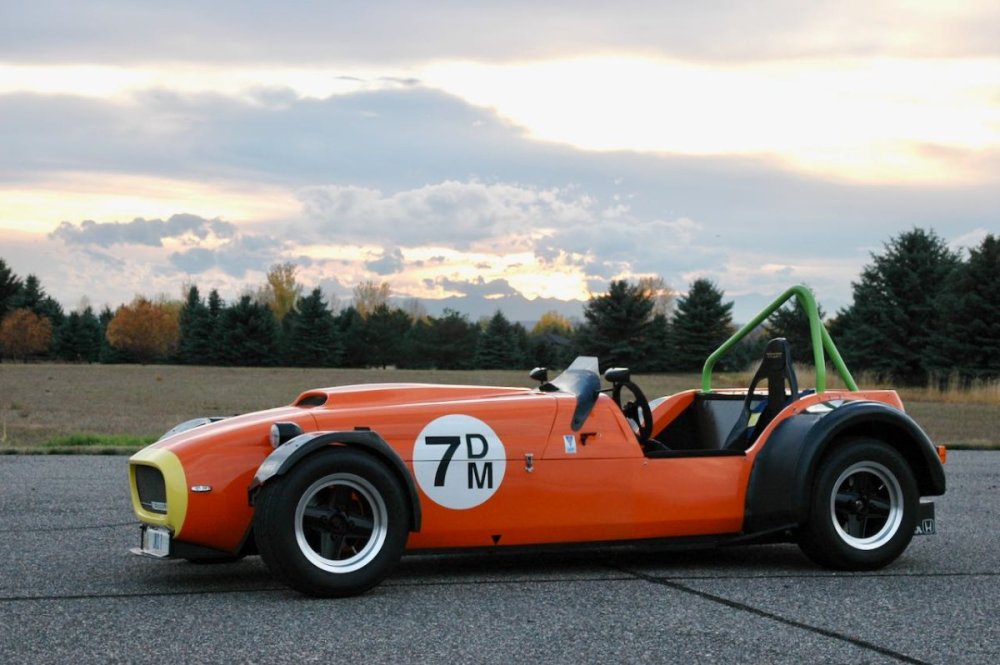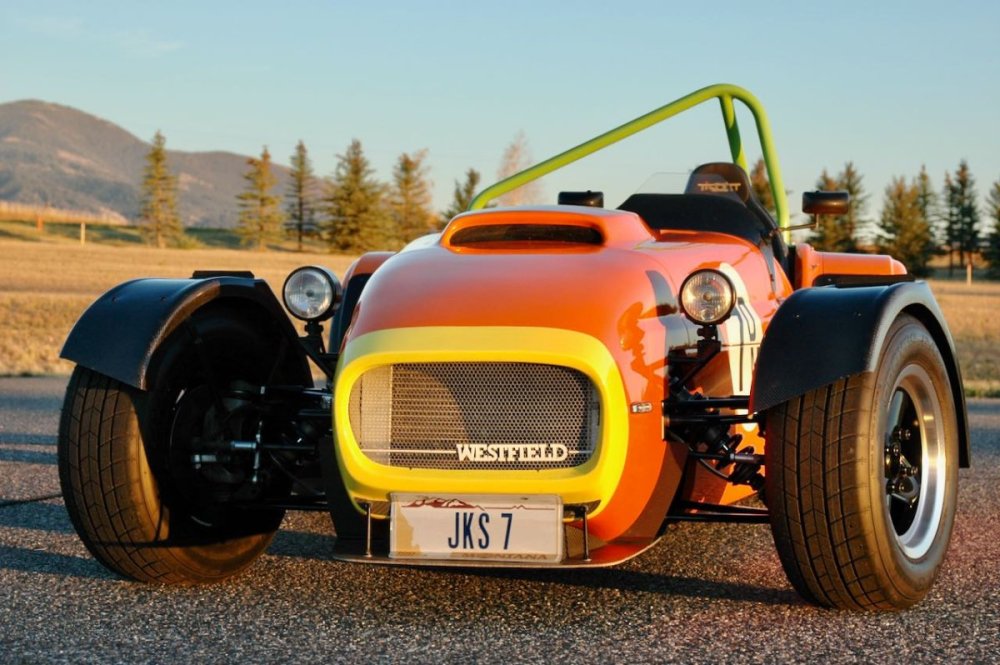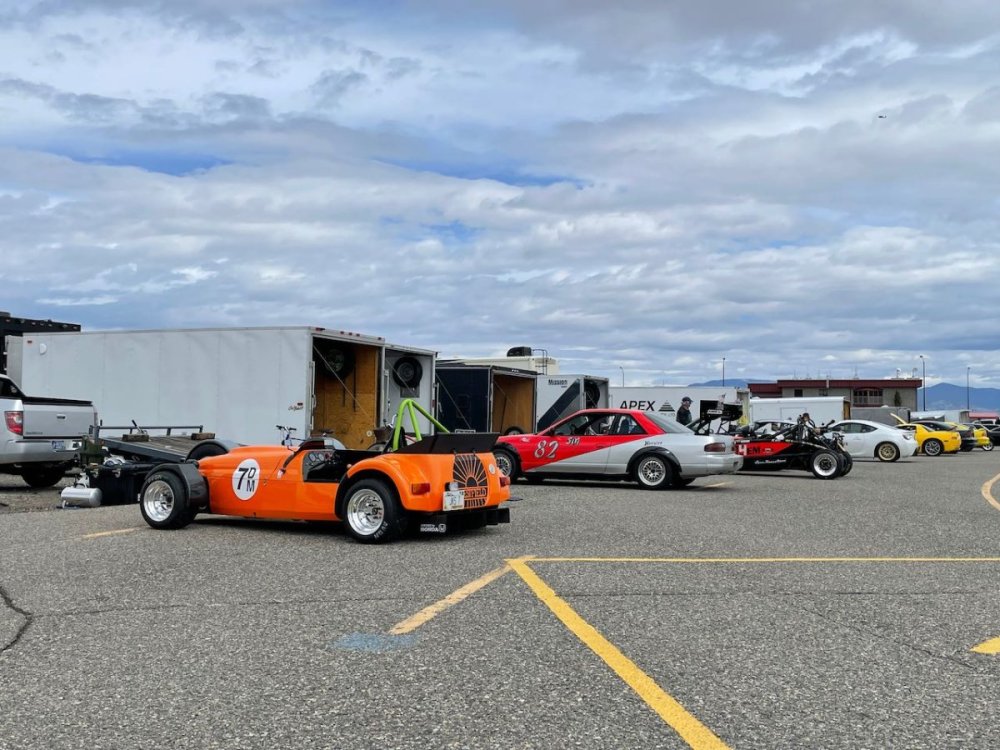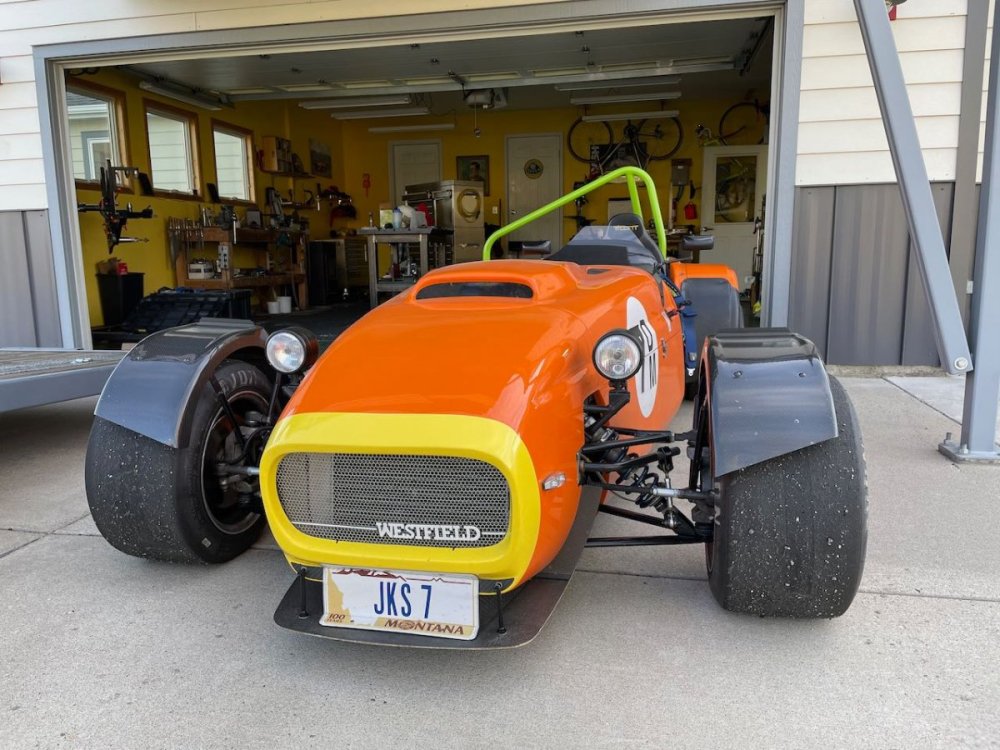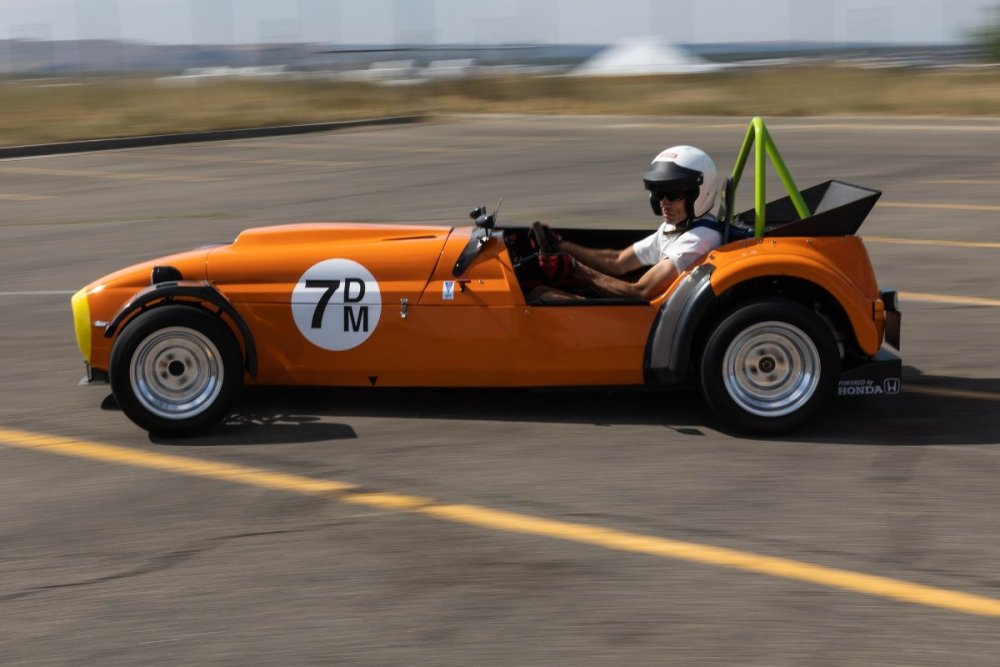-
Posts
553 -
Joined
Personal Information
-
Location
Bozeman MT
-
Se7en
Westfield Mega S2000
Recent Profile Visitors
The recent visitors block is disabled and is not being shown to other users.
-

Westfield Owners - need some guidance on a LSD
Davemk1 replied to David Hansen's topic in General Sevens Discussion
I have a Westfield with a Sierra diff and it is fit with a Quaiffe limited slip. I autocross the car seriously and it no doubt makes a considerable difference in my times. That said...if you are not competing in the car...or you rarely, or never, spin up the inside tire coming out of a corner then I think there would be no benefit in fitting the LSD. In the end I think it's about how the car is used. If it's strictly a street car there's much less need for an LSD. The LSD has had no noticeable effect on the driving experience unless you are driving very hard out of corners and having the inside tire light up. The LSD diff doesn't hurt anything in less than race conditions, but it also brings little to the table. I hope that makes sense...I've not finished my morning coffee so who knows how well I'm making the point. dave -

First Breakdown, (going to a British car show)
Davemk1 replied to theDreamer's topic in General Sevens Discussion
I have no idea on your tech question but I have to say that your wife is a keeper! dave -
I have a friend who used a Ultralite for autocross for a number of years and after seeing it run countless times I'd say that one could make it nationally competitive but that it will take a lot of work. I think there are a few challenges - - like my Westfield the Ultralite is powered by a Honda S2000 engine. It's a wonderful powerplant that revs to 9000 rpms and that's good. The downside is that it makes very little low end grunt to pull out of tight corners. My S2000 engine makes 250 hp and 150 ft/lbs but peak torque is at nearly 7000 rpms. At 3000 rpm's it makes only 118 ft/lbs, which given the weight of the car isn't bad but I doubt this would be nationally competitive. My S2000 has ITB's, a tubular exhaust, and light pulleys and flywheel to get these numbers. - the two Ultralites I've personally seen did not have an provision to use sway bars front or rear so it can be hard to really fine tune the handling. One can add a bar but it's not a straight forward "bolt-on" proposition. - Looking at the build of the Ultralite makes me think it would be a real job to get it down to min weight of 1400 lbs with the driver. One issue is that the S2000 engine and trans are very heavy compared to a Duratech or other engines out there. I wonder if there are any Ultralite owners out here with actual real world weights of their cars? - I think to compete at a national level I think that one would need to do a lot of work on the aerodynamics. Much of the underside of the car is open and it would need a full width nose so that you could run an effective front splitter. Last year's DM winner looks to have he winning recipe when it comes to aero and I'm sure it wasn't easy to get that to happen while staying close to min weight. I've been competing in the Northwest for many years in a Westfield and I think if I had a VERY good day I could make the top 5 in my car nationally...or should I say that I think the car is up to the task. I think that the Westfield, Caterham or Birkin would be better platforms to start with....particularly if they used a small engine/turbo/supercharger to boost low end torque. I suspect that these cars are lighter to start with and that the suspensions are easier to adjust and fine tune. Just my 2 cents. dave
-

About to Purchase First 7 and Need Advice!
Davemk1 replied to Randy Flowers's topic in General Sevens Discussion
I'll throw this out there even though it doesn't address the questions originally asked - If you've never driven a Seven you should drive one before you buy one. I've known more than a few people who have loved the idea of Seven who drove it a few times and then wanted out. The cars leave the driver very exposed and vulnerable and some people don't enjoy that sensation. I had one tell me that they got a ride in a Miata once and they loved that and therefore a Seven will be great. A Miata feels like Lincoln town car compared to a Seven. Your head is at about the height of a semi truck's lug nuts. A Camry next to you at a light will look like an SUV. If it's hot you'll be hot, if cold you'll be cold, if wet...you guessed it...you'll be wet. A drive will leave you dusty and dirty even with side curtains. The wind noise and buffeting are not like anything else out there. I don't want to discourage you from owning a Seven. I think they are offer the most pure driving experience that one can use on a public road. I've owned two and have put about 30,000 miles on them collectively. That said they are not for everyone and there is zero shame in that. If you don't like it, you simply don't like it. But buying one without ever driving one feels risky to me. It will be worth every cent and every minute it takes to travel to see the car and drive it. I hope you end up trying it and loving it...if you don't love it you'll have saved yourself a lot of grief. Good luck to you and enjoy the process. dave -

Effective wind deflector/buffeting reduction?
Davemk1 replied to Cueball1's topic in General Sevens Discussion
I don’t wear a helmet when driving. I do where a full coverage pair of glasses that have 2.4mm thick ‘bulletproof’ lenses to protect my eyes. They are a shooting glass and the optics and protection are very good. I also find that I don’t follow other cars/trucks very closely to minimize the chances of a rock being thrown up at me. It’s funny - sometimes you’ll be driving along and suddenly see a large bug like a bumble bee headed straight at my face and then it flows the airstream right up and over my head. It’s like magic! -

Effective wind deflector/buffeting reduction?
Davemk1 replied to Cueball1's topic in General Sevens Discussion
I owned a Birkin years ago and currently drive a Westfield and I found that with both of these cars that the further back from the front windshield that you sit the worse the buffeting issue is and the harder it is to fix. I'm 6'4" so I always end up pretty far back. After using wind deflectors and additions to the windscreen I found that this was one case where "less-is-more" is really a thing. On the Birkin I used a Brookland screen and that worked pretty well. On the Westfield I'm using an aero screen with a short lexan addition and it had taken care of the issue. Even at over 100 mph my head stays still without any buffeting. For me it's by far the best choice. dave -
What rear toe are you running? dave
-
Good looking ride - do you know what it weighs? dave
-

Front license plate required in Oregon
Davemk1 replied to Cueball1's topic in General Sevens Discussion
-
I use 13" x 10" Real Racing Wheels on my Westfield for autocross. I run Avon Avon slicks and love the combo. They are light and strong and I have many hundred runs on them without issue. It's worth checking with Real Racing wheels. I think they are much less expensive than Kodiaks and he will make them with any width, bolt pattern and backspace that you want. dave
-
I've used brush on rubberized truck bed liner and it's done a great job even considering that I autocross the car with very sticky slicks about 20 days a year. I've used Herculiner and was able to pick up a smallish can at my local Ace hardware. I've used it on the underside of both fiberglass and carbon fenders and never got any cracking even with all the junk thrown up by the slicks. I've used 3 coats. One nice side benefit is that it makes driving a bit quieter with stones hitting rubbery stuff instead of a hard surface. dave
-
-
Car makers have been smoothing out shifting with weighted knobs for a long time. It in effect it's a mass-damper that resists vibration. The extra mass also gives it more momentum once moving across the open gate so that it moves into the next gear with less force. It takes more force to get it moving but then it uses that force to move into the next gear. I have a very light wooden knob on my Honda shifter and noticed it feeling a bit notchier than the stock alloy knob. I use it because on a hot, sunny autocross the metal knob can get really hot...but the wood feels much cooler to the touch. But the heavier alloy knob shifted a bit better. dave
-
It looks as if that is a fitting for a fuel tank vent hose. One would typically fit a piece of rubber hose and run it up above the tank as high as possible. The hose can be left open on the end or you can fit a filter (a good idea to keep bugs and stuff out of it) and this will allow for air to replace the space taken up by used fuel without it creating a vacuum. It will also allow the air to escape when the air in the tank expands due to a temperature change. If you get the end of the vent hose as high as possible fuel should not come out of it. dave
-

Adjusting the suspension stiffness on a 7?
Davemk1 replied to philso's topic in General Sevens Discussion
There are of course three ways to add comfort/compliance to your car - - you can change the spring rate - you can change the damping - you can change the height of the tire sidewall Springs - One needs to keep in mind that most Sevens have very limited suspension travel and that fitting soft springs might allow the suspension to bottom out more easily. The stiffness of the spring will dictate how far the suspension moves when it encounters a bump and not how easy it will move. This is very often misunderstood. Damping - where spring stiffness dictates how far the system will move it's the damping that will dictate how quickly the suspension moves and this is something that can easily be felt. It matters little how stiff the spring is if the damping is set so stiff that the system can't move quickly enough to adsorb a bump. A car that is "over damped" will feel hard, harsh, and will lack a connected feel to the surface. Traction will be compromised. If, on the other hand, the damping is too soft the car will wallow and float as the suspension will still be reacting to one bump when it hits the next. This is where the time factor of damping comes in. Also...if the damping it too soft the car will have a greater tendency to run through all of its travel and bottom out. The system will work best when the spring rates and the damping are working well together....stiff springs and soft damping will suck just as much as too soft springs and too hard damping. The two work together in conjunction and it's best to look at them as a system. A given spring rate needs a given amount of damping to control that force. Tire sidewall - if we are talking about a traditional Seven like a Caterham, Westfield, Birkin...etc many of these cars will come with 15" wheels and a tire with a low profile sidewall. The height of the sidewall will have a real effect on ride comfort. It makes sense when you think about it...tires are an air-spring and a smaller volume spring will have a higher spring rate and it will be more progressive. One thing that can be done is to replace the 15" wheels with 13's and a tire with a taller sidewall. The tire will be the same outside diameter and this means that the sidewall is a full 1" taller and this does a great job of taking the buzz out of the ride by absorbing road imperfections before the suspension can even deal with it. There are also real-world handling benefits of the taller sidewall with a lightweight car and that is a topic of it's own. One of the best things I ever did with my Westfield was to ditch the 15's and put on 13's with a taller tire...better ride quality, better handling and lower un-sprung weight. A win-win-win if ever there was one. Just my 2 cents. Have fun with it. dave




